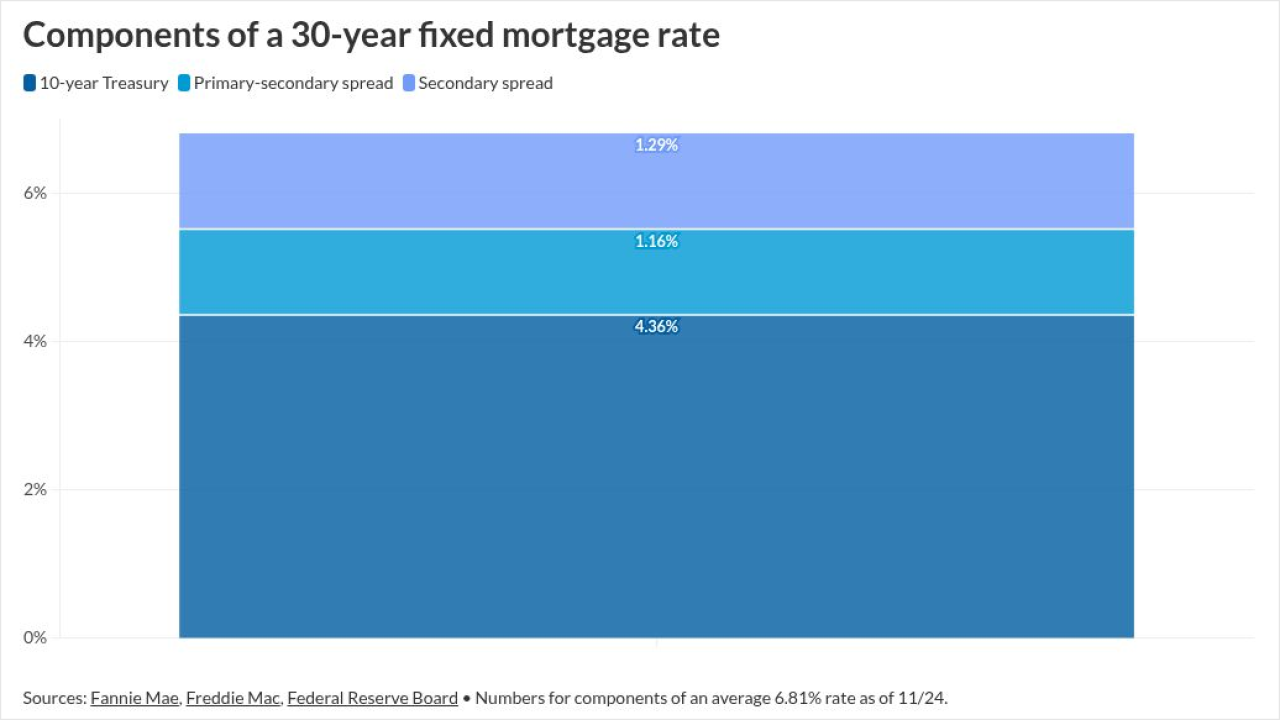FS Investments launched its first collateralized loan obligation (CLO) in December 2020, after 17 years of managing $80 billion in real estate and a range of credit instruments. Applying insights it garnered from running those portfolios, FS Investments grew its CLO business and now manages four CLOs totaling $1.4 billion. It issued a new CLO and reset an existing one earlier this year. It is in the process of resetting an existing one and plans to issue another CLO later this year or early next year, depending on market conditions.
Founded in 2007 as Franklin Square Investments, the Philadelphia-based firm historically designed and managed alternative investment products for private wealth and mass-affluent investors. It currently manages $40 billion in private-equity investments, $30 billion in various credit instruments, and $10 billion in real estate assets, for private-wealth as well as institutional clients.
"We think we have a competitive edge, because our firm has a lot of private direct-lending and private-equity positions that give us good data on industry trends--similar to the biggest credit providers. That gives us an advantage on the margin relative to smaller platforms," said Chris Condelles, who holds multiple titles across the firm including the firm's deputy chief financial officer, head of its capital markets group, and co-lead of the Bridge Street CLO platform.
Condelles and James Holley, co-portfolio manager and head of CLO research at FS Investments, recently spoke to Asset Securitization Report (ASR) about current CLO-market dynamics.
CLO ETFs are unlocking [floating-rate] CLOs to investors that didn't have access to them before.
ASR: How might CLO arbitrage be affected by the recent 50 basis point rate cut?
Holley: It may have a modestly negative impact, due to reduced income on the unlevered portion of the capital structure. But an offsetting dynamic will be reduced cash-interest costs, lessening stress for some of the most levered borrowers. The arbitrage has become more attractive compared to a few years ago as CLO liability levels have improved, in part due to demand for CLO debt driven by large banks returning to the AAA market.
ASR: Has the emergence of CLO ETFs factored into that demand?
Holley: It's still an emerging area but it has grown dramatically and there's a lot of opportunity there. When those ETFs are experiencing strong inflows, they can be a big driver of demand, but they're still a very small part of the market.
ASR: Will lower rates reduce demand for floating-rate CLO ETFs?
Condelles: It's tough to say because they're so new, and they provide access to a broader array of investors with different motivations than pure-play institutions that invest through fixed-income funds. Lower rates could prompt some rotation to fixed-rate paper, but the counterpoint is that CLO ETFs are unlocking [floating-rate] CLOs to investors that didn't have access to them before. I would lean towards more people investing in them over time because ETFs tend to be a preferred structure, and it's another way to manage portfolio risk.
As we expand our CLO platform, we do plan to leverage our investment-management capability to create more of an ecosystem around our CLO platform.
ASR: Could FS Investments launch a CLO ETF?
Condelles: We've generally focused on pure alternative investments, and I wouldn't place AAA CLOs in that category. But as we expand our CLO platform, we do plan to leverage our investment-management capability to create more of an ecosystem around our CLO platform and to leverage our firm's broad base of investors. This could entail launching funds into that private wealth and mass affluent channel that focus on investing across the capital structure, and we could find the ETF structure compelling.
ASR: What about private credit CLOs?
Condelles: We have a publicly traded business development company (BDC), FS/KKR Capital Corp., which is a partnership between FS Investments and KKR. FS/KKR has issued middle market--private credit --CLOs in the past.
ASR: What is Bridge Street's growth strategy for next year?
Condelles: We're focused on measured growth. If the markets are cooperative, we'll be taking our deal sizes up to create more liquidity in the debt stack. It's important for us to create a liability profile that investors can trade at different tenor points and have liquidity and a known brand in the market, which should reduce our liability costs and improve our execution. That's a top priority. We'll continue to focus very heavily on running a high-quality portfolio with high net-asset-values (NAVs) and a very disciplined fundamental investing approach. We believe that at two-to-three deals a year, we'll probably grow anywhere from $800 million to $1.2 billion annually.
ASR: How does FS Investments pursue that disciplined approach?
Condelles: One of the important elements for us is to manage risk by getting out of credits that show a change in performance relative to our underwriting thesis. So we want to make sure we have a platform that isn't so large that it becomes a challenge to exit positions. One of the benefits to being a firm our size already, with plenty of other growth drivers, is that we don't have to grow just for growth's sake.
We underwrite a business with a particular base case in mind, and we're constantly re-underwriting those credits.
ASR: What prompts an exit?
Holley: It can take a lot of forms, but the overriding thesis is that we underwrite a business with a particular base case in mind, and we're constantly re-underwriting those credits. When we start to see them go off track, we try to move quickly out of those positions and rotate into names where we have more conviction.
ASR: Do you move quicky in part to avoid the risk of getting stuck on the wrong side of liability management exercises (LMEs)?
Holley: Yes, in part, because deteriorating credits are more likely to become candidates for LMEs.
ASR: The use of LMEs that often divide creditors has increased dramatically this year. Do you see that continuing?
Holley: We've certainly seen sponsors showing less compunction around pursuing anti-creditor behavior. In the past, people thought that would be limited to a couple of "aggressive" sponsors, but it's a much larger group at this point. The documentation quality varies dramatically across credit in the universe, and certainly that affects sponsors' ability to pursue different types of [LME] transactions.
ASR: Why such variance?
Holley: It ebbs and flows with the relative strength of the market. As the market has opened up more, we've seen sponsors able to get away with more. We've seen the market coalesce around blocking known loopholes, such as the J Crew blocker. But even then sponsors may tell investors they have certain protections but still include ambiguous or contradictory language that allows them to circumvent those protections. It's very important to understand the language of each document.
ASR: Does FS Investments staff review that language?
Holley: We have internal expertise, but we often rely as well on external counsel, who is well versed in it.
ASR: In addition to blockers, lenders are entering into cooperation agreements to thwart aggressive LMEs and in some instances litigation has favored lenders. Will any of these or a combination reduce lender conflicts?
Holley: You've highlighted a lot of the complexity, and it's still early days. Portions of this have been contested in court and judges have looked at certain language unfavorably and allowed other things. It's still the Wild West. The language is different in each document, so there's not a lot of strong precedence.
One thing we come back to when investing: Companies that are performing don't engage in LMEs; only when they're in distress. We like to think we do a good job of avoiding credits before they become problems. If you look at the universe of loans, there are plenty whose documents limit those opportunities.





